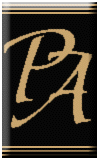Articles for Educators
Parent Assessment of Giftedness:
Using Portfolios to Document Gifted Learners’ Talents
Kingore, B. (2017). The Kingore observation inventory (3rd ed.). Austin: P. A. Publishing.
One ignored role of portfolios is parental assessment of the children’s exceptional learning needs. The products children develop provide clear documentation of achievements and potential.
Introduction for Educators
Parents have the right and need to be active partners with schools in planning and supporting the education of their children. When identifying gifted potential, districts benefit from parental assessment information in forms other than checklists. Portfolios enable parents to be proactive instead of reactive. They encourage parents to be viable members in the assessment process by preparing concrete examples of children’s abilities and needs.
Portfolios increase the crediblility of parental assessment of gifted potential by documenting the depth and complexity of the child’s work. Documentation through products illustrates each gifted characteristic of the child that a parent has observed and increases the likelihood that a parent’s perception of the child’s needs is respected. However, if parents overestimate the advanced potential of a child, school personnel can meet with the parent to share a small set of typical examples of grade-level products to compare with the parent’s selections and concretely substantiate that the child’s learning needs are best met through the core curriculum rather than advanced contents.
Parental development of a portfolio to substatiate a student’s gifted potential is particularly needed when the child is:
- Part of an educational system that values parental assessment in identifying and serving advanced learners and wants to increase the validity of that assessment.
- Very young and not yet recognized as advanced by adults at school.
- A member of a diverse culture whose gifted behaviors are more difficult to assess in a mainstream classroom.
- Advanced in one subject area but still not all.
- New to the area so the child’s potential has not been demonstrated in that school.
- A student in a school where the curriculum in all classes is not differentiated for able learners.
Guiding Parents’ Selection of Products
Parents need guidance in selecting products that are appropriate and effective. Share your district’s mission statement and definition of giftedness with parents so they can more directly match selections in the portfolio to the school’s philosophical stance. For example, when your school’s program serves academic giftedness in language arts, math, social studies, and science, you want parents to include products that demonstrate advanced talents in one or more of those areas.
The product list included in the parent section is meant to prompt ideas of a wide range of products from home that might be appropriate for students’ portfolios (adapted from Kingore, 1999a). A variation of these products specifically suited to very young children is shared in Communicator (Kingore, 1999b).
The following factors increase the assessment value of a portfolio:
- A portfolio should be an integral reflection of what a child has learned rather than artificial activities and isolated skills.
- Products that effectively advocate giftedness demonstrate depth, complexity, and the ability to process and reorganize information to produce a product unique for that age or level.
- The products should help substatiate that the child’s interest and expertise in topics are not typical.
- Products selected for a portfolio must be completed by the child without assistance.
The parent section of this article (which can be found here) helps parents understand how to facilitate their assessment and development of a portfolio. Specify to whom parents should share the portfolio once the product selection process is complete.
References
Kingore, B. (1999a). Assessment (4th ed.). Austin: P. A. Publishing.
Kingore, B. (1999b). Portfolios. Communicator: California Association for the Gifted, 30(4), 10-11, 46-47.

